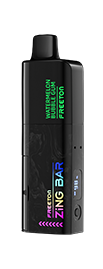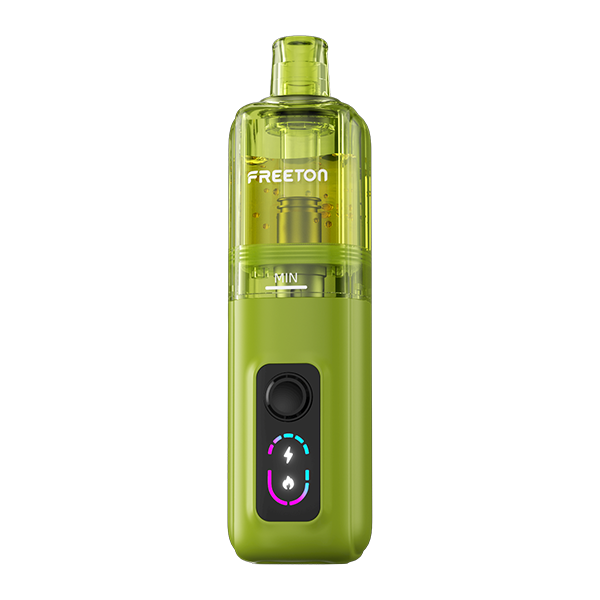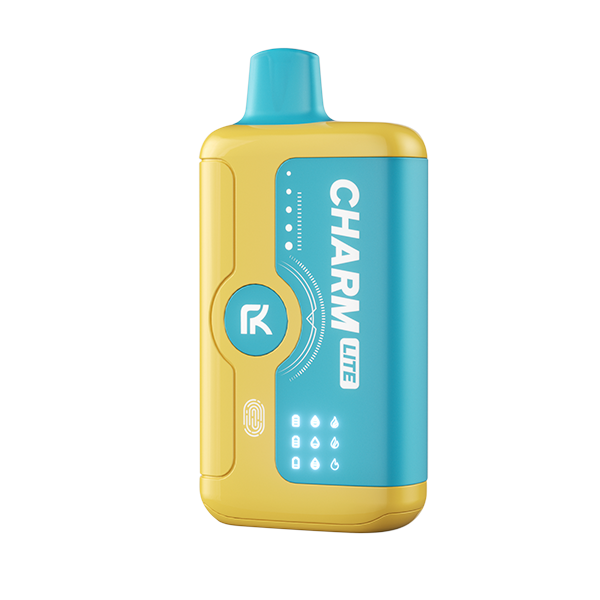
Disposable electronic cigarettes (DECs) have emerged as a notable alternative to traditional tobacco smoking, reflecting evolving preferences in the realm of nicotine consumption. This section provides a brief yet comprehensive introduction to DECs, shedding light on their purpose, widespread popularity, and the fundamental components that define their functionality. Understanding Disposable Electronic Cigarettes: 1.1 Purpose and […]
Disposable electronic cigarettes (DECs) have emerged as a notable alternative to traditional tobacco smoking, reflecting evolving preferences in the realm of nicotine consumption. This section provides a brief yet comprehensive introduction to DECs, shedding light on their purpose, widespread popularity, and the fundamental components that define their functionality.
Understanding Disposable Electronic Cigarettes:
1.1 Purpose and Appeal: Disposable electronic cigarettes serve as a convenient and portable solution for individuals seeking an alternative to traditional smoking. They are designed for one-time use, eliminating the need for maintenance or recharging. This disposable nature caters to users looking for a hassle-free and on-the-go vaping experience.
1.2 Popularity and Accessibility: The popularity of DECs has soared, driven by factors such as accessibility and a diverse range of flavors. Their availability in gas stations, convenience stores, and online platforms contributes to their widespread adoption among both novice and experienced vapers.
1.3 Key Components: DECs consist of essential components, including a pre-filled e-liquid cartridge, an integrated heating element, and a compact battery. The seamless integration of these components results in a user-friendly device that requires no prior knowledge of vaping technology.
In the subsequent sections, we delve into an in-depth health impact assessment associated with the use of disposable electronic cigarettes, exploring both the inhalation-related concerns and broader health implications.

Health Impact Assessment: Inhalation and Beyond
The potential health implications of using disposable electronic cigarettes extend beyond mere nicotine inhalation. This section scrutinizes the health impact by delving into the inhalation of aerosols, nicotine exposure, and any associated risks that users may face.
Stay tuned for an exploration of the intricate relationship between disposable electronic cigarettes and health, addressing concerns and providing a comprehensive analysis of their effects.
#3. Comparative Analysis: DECs vs. Traditional Cigarettes
In this section, we conduct a comprehensive comparative analysis, delving into the health effects of disposable electronic cigarettes (DECs) in contrast to traditional tobacco cigarettes. The exploration will focus on key differences in ingredients, risks associated with combustion, and the overall impact on health.
3.1 Ingredients and Composition:
Disposable Electronic Cigarettes (DECs):
DECs typically contain a liquid mixture comprising nicotine, flavorings, and a base of propylene glycol and/or vegetable glycerin. Notably, they lack many of the harmful compounds found in traditional cigarettes, such as tar and various carcinogens.
Traditional Tobacco Cigarettes:
Traditional cigarettes are complex in composition, with over 7,000 chemicals released during combustion. These include toxic substances like tar, carbon monoxide, and numerous carcinogens, contributing to the well-documented health risks of smoking.
3.2 Risks Associated with Combustion:
Disposable Electronic Cigarettes (DECs):
DECs operate through vaporization, producing an aerosol rather than smoke. The absence of combustion significantly reduces the release of harmful byproducts, addressing one of the primary health concerns associated with traditional smoking.
Traditional Tobacco Cigarettes:
The combustion of tobacco in traditional cigarettes results in the formation of harmful substances like tar. This combustion process is a major contributor to the increased risk of respiratory issues, cardiovascular diseases, and various cancers.
3.3 Overall Health Impact:
Disposable Electronic Cigarettes (DECs):
While not entirely risk-free, DECs present a potential harm reduction compared to traditional cigarettes due to their reduced exposure to harmful compounds associated with combustion. The focus shifts to addressing nicotine addiction.
Traditional Tobacco Cigarettes:
Traditional cigarettes are unequivocally linked to a myriad of health issues, including lung cancer, cardiovascular diseases, respiratory disorders, and a higher risk of mortality.
The subsequent section will delve into the addictive nature of nicotine in disposable electronic cigarettes, exploring its role in dependency development and the associated challenges.
#4. Nicotine Addiction and Dependency
This section explores the addictive nature of nicotine in disposable electronic cigarettes (DECs) and its implications for user dependency. Understanding the factors related to nicotine addiction is crucial in evaluating the overall health impact and challenges associated with the use of DECs.
4.1 Nicotine Levels:
Disposable Electronic Cigarettes (DECs):
DECs offer varying nicotine concentrations in their e-liquids, allowing users to choose different levels according to their preferences. However, the levels are generally lower than those found in traditional cigarettes.
Traditional Tobacco Cigarettes:
Traditional cigarettes deliver nicotine through combustion, resulting in higher and more rapid nicotine absorption. This contributes significantly to the addictive potential of smoking.
4.2 Development of Nicotine Dependency:
Disposable Electronic Cigarettes (DECs):
While DECs are considered less addictive than traditional cigarettes due to lower nicotine content and gradual absorption, there is still a risk of developing dependence, particularly among individuals who were not previous smokers.
Traditional Tobacco Cigarettes:
The rapid delivery of nicotine through smoking traditional cigarettes contributes to the swift development of dependence. Nicotine dependency is a central factor in the challenges associated with quitting smoking.
4.3 Withdrawal Symptoms:
Disposable Electronic Cigarettes (DECs):
Users who develop a dependency on nicotine from DECs may experience withdrawal symptoms when attempting to quit. These symptoms can include irritability, cravings, and mood disturbances.
Traditional Tobacco Cigarettes:
Withdrawal symptoms from traditional cigarettes are well-documented and can be intense, encompassing physical and psychological effects. These symptoms often contribute to the challenges of smoking cessation.
4.4 Smoking Cessation Challenges:
Disposable Electronic Cigarettes (DECs):
While DECs may assist in smoking cessation by providing a less harmful alternative, the potential for developing a dependency on nicotine remains a concern. Quitting DECs may still pose challenges similar to quitting traditional cigarettes.
Traditional Tobacco Cigarettes:
Smoking cessation is notoriously challenging due to the highly addictive nature of nicotine in traditional cigarettes. Nicotine replacement therapies and smoking cessation programs are often employed to aid individuals in their journey to quit smoking.
Understanding the nuances of nicotine addiction and its implications for dependency provides a comprehensive perspective on the health challenges associated with both disposable electronic cigarettes and traditional tobacco cigarettes. The subsequent section will explore the environmental health considerations related to the use of DECs.

Environmental Health Considerations
This section delves into the indirect health impact of disposable electronic cigarettes (DECs) on the environment and public health, particularly in relation to waste management and disposal. Examining the environmental footprint of DECs is essential for a holistic understanding of their impact.
Waste Generation:
Disposable Electronic Cigarettes (DECs):
DECs contribute to electronic waste, comprising materials like plastic, metal, and electronic components. Improper disposal can lead to environmental harm, especially if not recycled appropriately.
Traditional Tobacco Cigarettes:
Traditional cigarette butts are a significant source of litter and environmental pollution. They contain toxins and non-biodegradable materials, posing a threat to ecosystems and wildlife.
Recycling Challenges:
Disposable Electronic Cigarettes (DECs):
The recycling of DECs can be challenging due to the intricate mix of materials. Users may not always be aware of proper disposal methods, leading to a potential increase in electronic waste.
Traditional Tobacco Cigarettes:
Cigarette butts are notoriously difficult to recycle. The toxic residues from tobacco and the presence of non-biodegradable filters create obstacles to effective recycling.
Environmental Toxins:
Disposable Electronic Cigarettes (DECs):
The manufacturing and disposal of DECs can release toxins into the environment, impacting air, water, and soil quality. Understanding and mitigating these impacts are crucial for sustainable use.
Traditional Tobacco Cigarettes:
Tobacco cultivation involves the use of pesticides and chemicals, contributing to soil and water pollution. The combustion of cigarettes releases harmful chemicals into the air, further affecting environmental quality.
Public Health Impact:
Disposable Electronic Cigarettes (DECs):
Environmental pollution from DECs can have indirect health consequences for communities. Contamination of water sources and soil may affect public health over time.
Traditional Tobacco Cigarettes:
The public health impact of traditional cigarette waste is well-documented, with cigarette butts posing risks to aquatic life and potentially entering the food chain.
Sustainable Practices:
Efforts to address environmental concerns associated with both DECs and traditional cigarettes involve promoting sustainable practices, recycling awareness, and advocating for responsible disposal.
Understanding the environmental impact of DECs in comparison to traditional cigarettes provides insight into the broader implications of their usage. The concluding section will offer recommendations, future directions, and a balanced perspective on disposable electronic cigarettes.
Recommendations and Future Directions
Balanced Regulation:
Governments and regulatory bodies should adopt a balanced approach to regulate the use, manufacturing, and disposal of disposable electronic cigarettes (DECs). Implementing clear guidelines for production standards, waste management, and user education can mitigate environmental impact.
Recycling Initiatives:
Promoting and supporting recycling initiatives for DECs is crucial. Manufacturers should explore eco-friendly designs, and users must be educated on proper disposal methods. Implementing deposit systems or recycling programs can incentivize responsible waste management.
User Awareness Campaigns:
Public awareness campaigns are essential to educate users about the environmental impact of both DECs and traditional cigarettes. Providing information on proper disposal practices, recycling options, and the overall ecological footprint can empower users to make informed choices.
Research on Biodegradable Materials:
Investing in research and development of biodegradable materials for DEC components can significantly reduce their environmental impact. Manufacturers should explore sustainable alternatives that break down naturally, lessening the burden on ecosystems.
Collaboration with Environmental Organizations:
DEC manufacturers should collaborate with environmental organizations to assess and improve their ecological practices. Partnerships can lead to innovative solutions, ensuring that the industry evolves with a strong commitment to environmental stewardship.
In conclusion, addressing the environmental impact of disposable electronic cigarettes requires a multi-faceted approach involving regulation, education, research, and collaboration. By implementing these recommendations, stakeholders can work towards a more sustainable and environmentally conscious future for the e-cigarette industry.































